Parsley, a popular herb known for its vibrant green color and distinct flavor, has been handy in culinary and medicinal practices for centuries.
Often overlooked as a simple garnish, parsley comes in various types, each with unique characteristics and uses. From curly to Italian flat-leaf to root parsley, this versatile herb offers various health benefits and adds depth and complexity to various dishes.
Here we will cover everything from the basics of the parsley plant to four different types of parsley you can try growing. We will also explain why it’s essential to learn about different types of parsley and how each can be handy in your cooking.
From identifying flat-leaf parsley to Hamburg root parsley, we have covered you with tips on how to grow and use them. We will also discuss All types of parsley. So let’s dive into the world of parsley and explore all it offers.
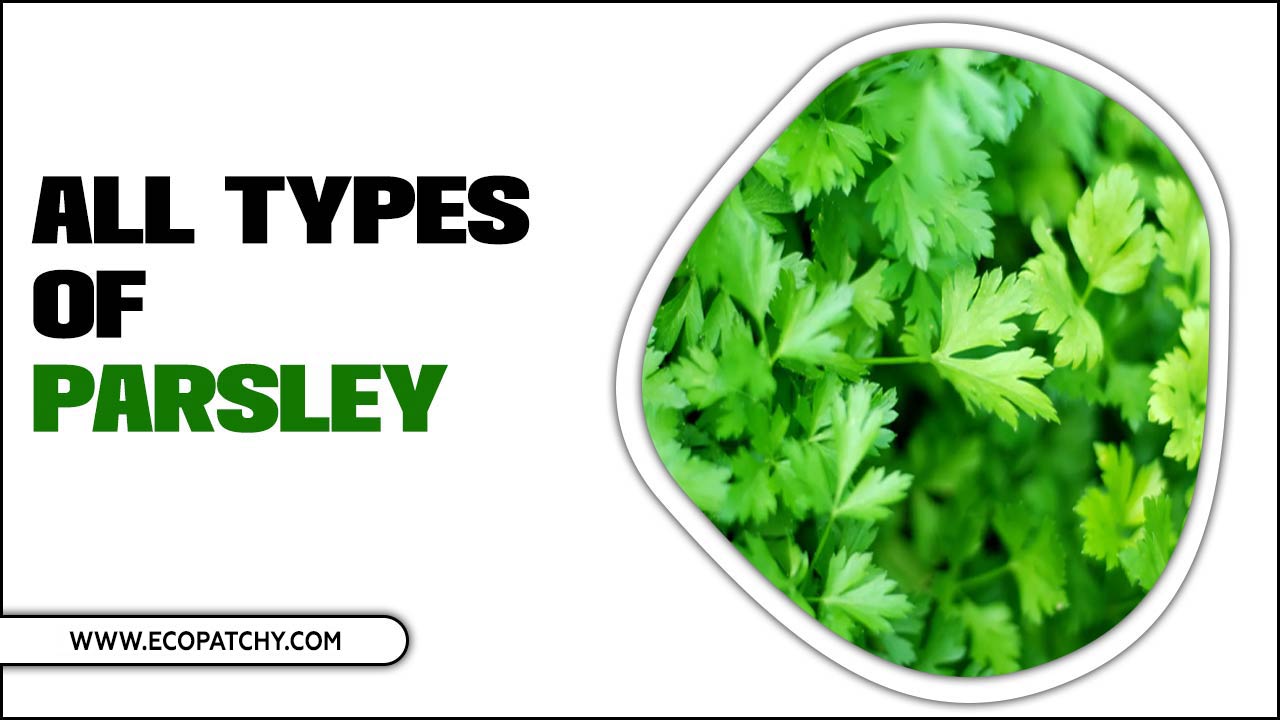
Parsley Plant Basics
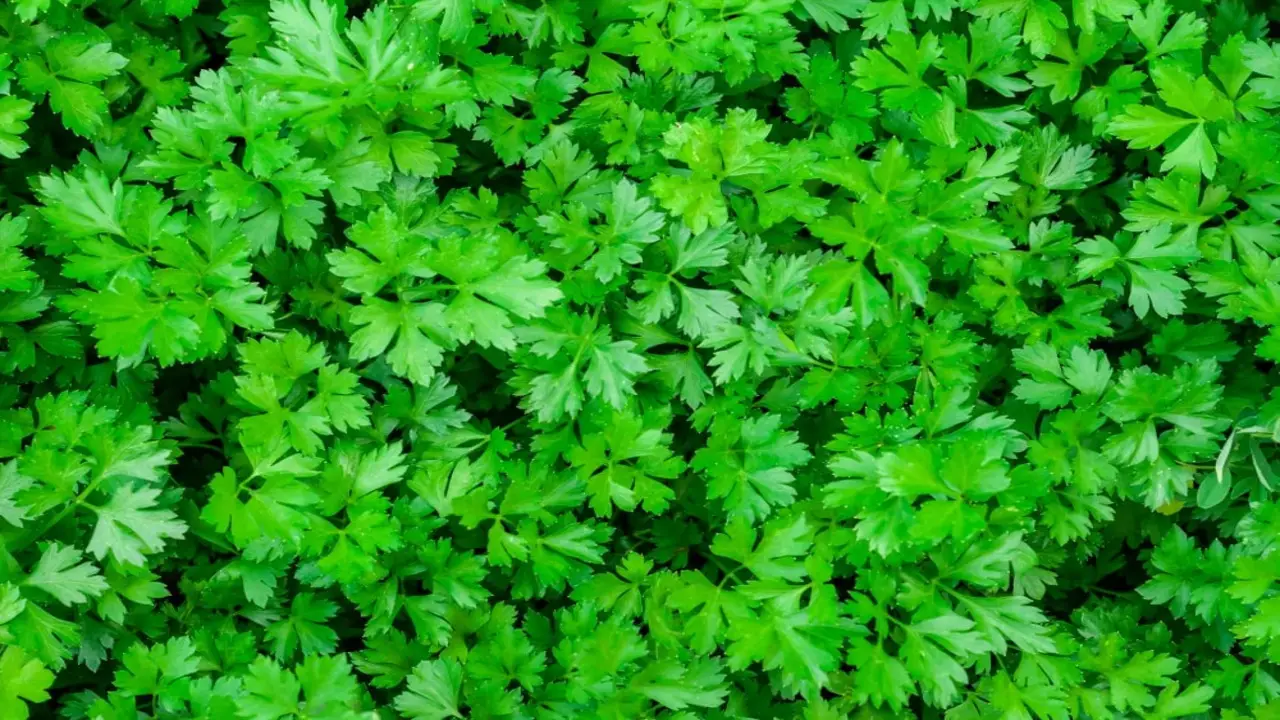
Parsley, a popular herb with vibrant green leaves and a fresh, crisp flavor, belongs to the Apiaceae family and is native to the Mediterranean region. Known for its high nutritional content, including vitamins A, C, and K, and antioxidants, parsley can be grown in containers or on the ground. It prefers well-drained soil and partial shade, requiring regular watering and occasional fertilization for optimal growth.
4 Different Types Of Parsley To Try Growing
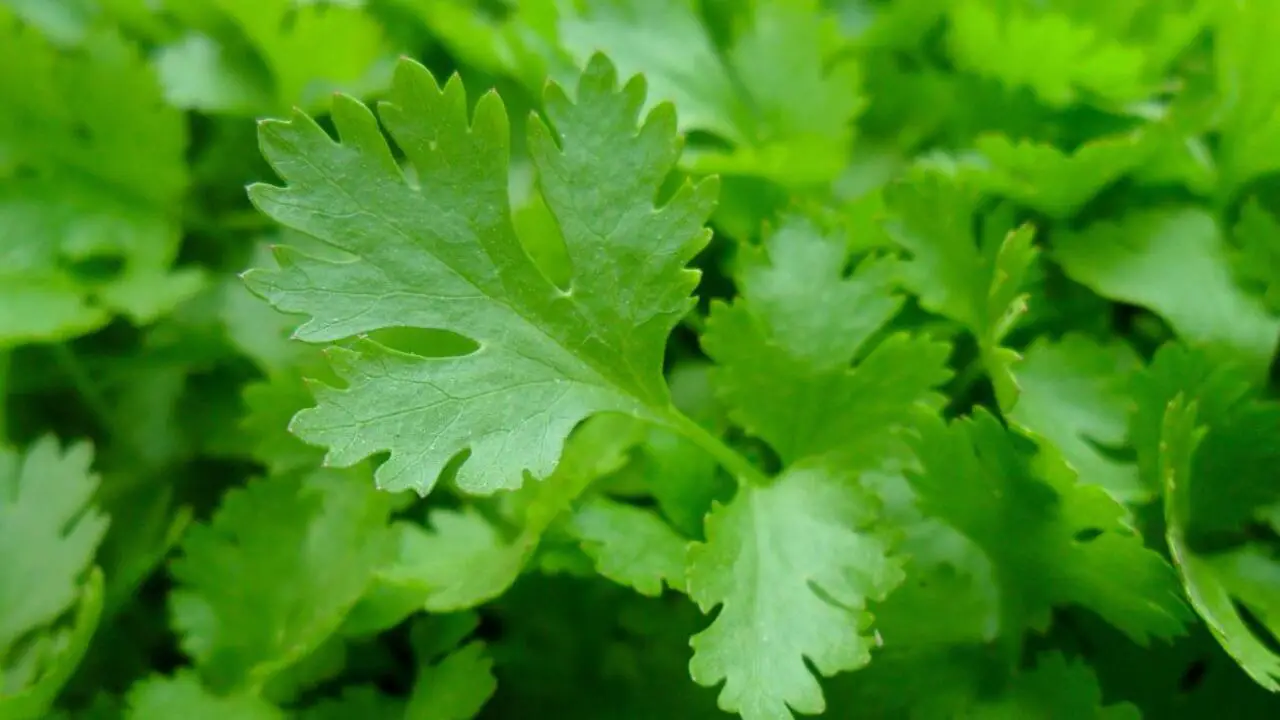
If you’re looking to grow parsley, you can try four different types. Italian parsley, also known as flat-leaf parsley, has a strong flavor and flat serrated leaves. Curly parsley has tightly curled leaves and a milder taste.
French or moss-curled parsley has finely curled leaves and an attractive appearance. Hamburg parsley, also called turnip-rooted parsley, has an edible root and is great for soups and stews. Try growing these varieties to add flavor and variety to your herb garden.
Why Learn About Different All Types Of Parsley?
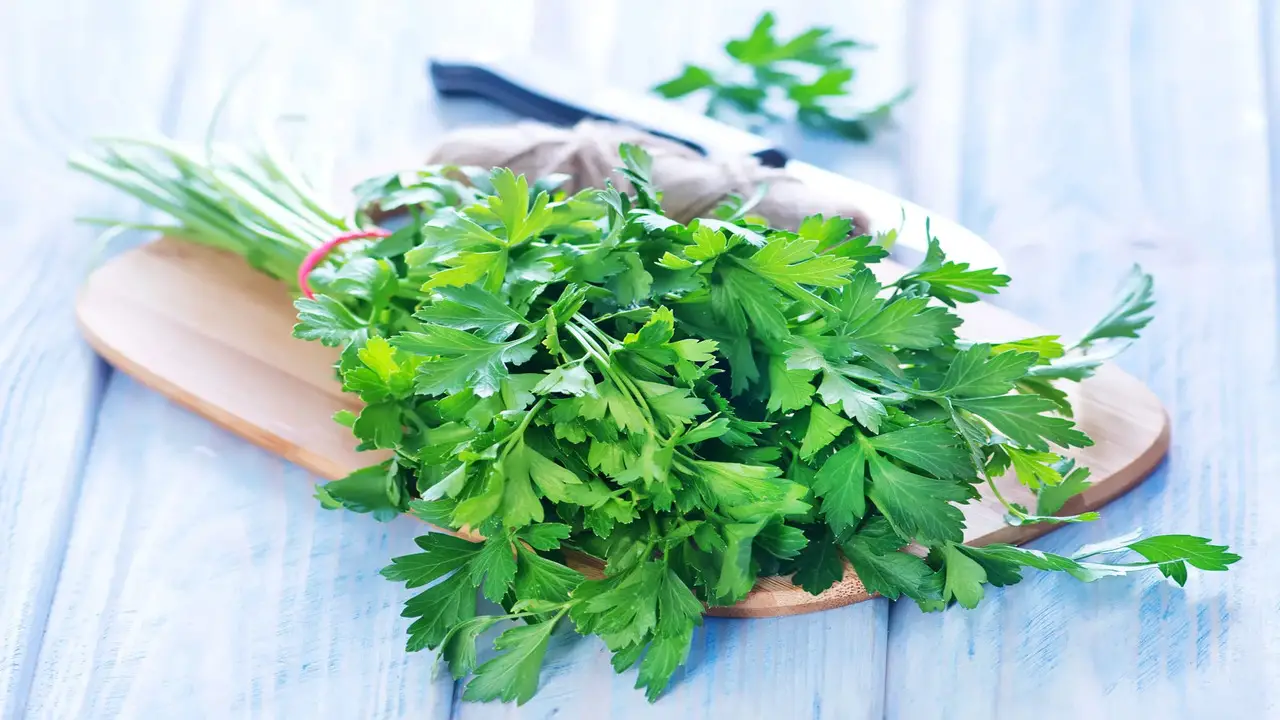
Parsley is a popular herb handy in various cuisines, and understanding the All types of parsley available can help you select the best variety to suit your culinary needs. Each type of parsley has its unique flavor and texture, which can enhance the taste and presentation of dishes. The three most commonly used types are curly parsley, Italian or flat-leaf parsley, and root parsley. Curly parsley has a mild, slightly bitter taste and is often handy as a garnish.
Italian or flat-leaf parsley has a stronger, more robust flavor and is ideal for soups, stews, and salads. Root parsley has a sweeter taste and is perfect for roasting or using in stews. Experimenting with different types of parsley can add depth and creativity to your recipes while allowing you to appreciate the versatility of this herb. Here’s your guide to the most common parsley varieties and how to use them.
Flat-Leaf Parsley
Flat-leaf parsley, also known as Italian parsley, is a popular herb in Mediterranean and Italian cuisine. It features flat, serrated leaves that are easy to chop and has a robust flavor that adds freshness to many dishes.
Its vibrant green color makes it an attractive garnish for salads, soups, stews, sauces, and marinades. Additionally, it is a great source of vitamin C and K, which helps support healthy bones and immune system function. Flat-leaf parsley is a versatile herb that can elevate the taste and appearance of any dish.
- Scientific Name: Petroselinum crispum var. neapolitanum Danert
- Hardiness Zone: 2-11
- Light: Full sun to part shade
- Soil: Well-draining soil
- Water: Keep it moist
How To Identify Flat-Leaf Parsley
Flat-leaf parsley, also known as Italian parsley, is a type of parsley that is distinguishable by its flat and serrated leaves that have a vibrant green color. Compared to other varieties of parsley, its leaves are broader and more substantial. It has a stronger fragrance and flavor than curly parsley, making it an excellent herb for cooking.
The stems of flat-leaf parsley are firm and can also be handy in dishes. When purchasing this herb from the market or grocery store, look for bunches with bright green leaves and avoid wilted or discolored ones.
How To Grow Flat-Leaf Parsley
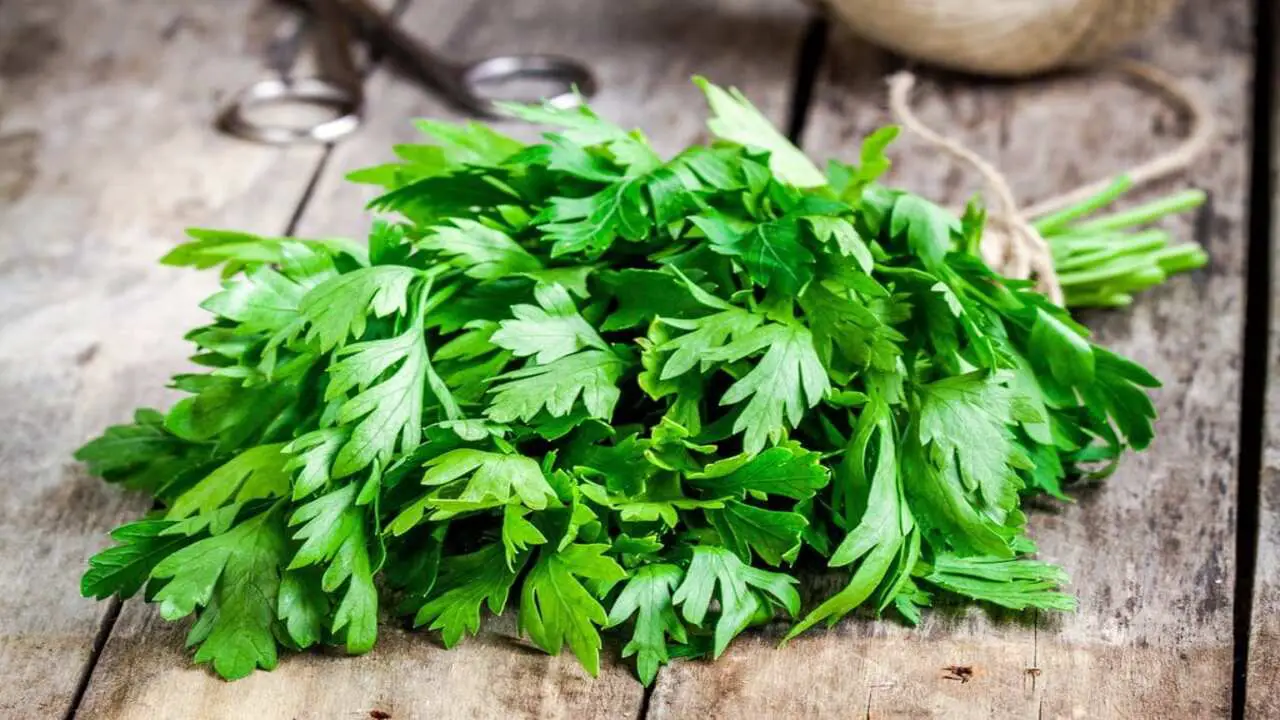
Plant seeds or seedlings in well-drained soil with partial shade to grow flat-leaf parsley. Ensure the soil is evenly moist but not waterlogged by regular watering. Apply a balanced fertilizer every few weeks for healthy growth. Harvest the outer leaves as needed, leaving the inner leaves to continue growing. Flat-leaf parsley is a versatile herb for any garden, whether in containers or directly in the ground.
Ways To Use Flat-Leaf Parsley
Flat-leaf parsley is a versatile herb that can be handy in various dishes to add a touch of freshness and vibrancy. One way to use it is by sprinkling it over salads or as a garnish for soups, stews, and main dishes. You can also incorporate it into marinades or dressings to enhance flavor.
Adding flat-leaf parsley to pasta dishes, omelets, or roasted vegetables can provide a vibrant green color and fresh taste. Additionally, you can blend it with garlic, olive oil, and lemon juice to make delicious homemade pesto that you can use as a condiment or sauce. Overall, flat-leaf parsley is an excellent herb to have on hand for adding flavor and visual appeal to your meals.
Curly (Common) Parsley
Curly parsley, also known as common parsley, has tightly curled leaves and a mild, fresh taste. It is commonly handy as a decorative garnish due to its vibrant green color. This versatile parsley adds visual and flavor contrast to dishes with smooth textures. Curly parsley is widely available in grocery stores and is perfect for adding a subtle herbaceous note to salads, sauces, and dips. Check out these popular cultivars: Forest Green, Extra Curled Dwarf, and Pagoda.
- Scientific Name: Petroselinum crispum neapolitanum
- Hardiness Zone: 2-11
- Light: Full sun (offer afternoon shade in hot climates)
- Soil: Well-draining soil
- Water: Keep it moist
How To Identify Curly Parsley
Its tightly curled, ruffled leaves and bright green color easily recognize curly parsley. Compared to flat-leaf parsley, the frilly appearance of its leaves gives it a more decorative look. It has a milder taste and lighter aroma than other varieties of parsley, making it an excellent choice for garnishing dishes. The curly variety is smaller than other types, with a more delicate texture. When purchasing curly parsley, choose fresh bunches with vibrant green leaves that show no signs of wilting or discoloration.
How To Grow Curly Parsley

Growing curly parsley is easy and requires planting seeds or seedlings in well-drained soil with partial shade. It is important to water the plant regularly while allowing the soil to dry out between waterings. Applying balanced fertilizer every 4-6 weeks can also help with growth. Harvesting outer leaves regularly, and leaving inner leaves to grow, will ensure a continuous supply of fresh parsley throughout the growing season.
Growing curly parsley offers versatility, as you can grow it in containers or on the ground. This makes it ideal for different gardening spaces, whether you have a small balcony or a large backyard garden. Additionally, curly parsley is a great herb to have on hand in the kitchen, adding flavor and nutrition to various dishes like soups, stews, salads, and sauces.
Ways To Use Curly Parsley
Curly parsley is a versatile herb that can be handy in a variety of ways to add flavor and visual appeal to your dishes. Whether you want to add a touch of green to your plate or elevate the flavors in your favorite recipes, curly parsley is a versatile herb that can enhance any dish. Here are some creative ways to use curly parsley in your cooking:
- Garnish: Use curly parsley to add color and freshness to your finished dishes. Simply chop the parsley leaves and sprinkle them over soups, salads, or roasted vegetables.
- Sauce And Dressings: Blend curly parsley with herbs, garlic, lemon juice, and olive oil to create a vibrant and flavorful sauce or dressing. You can drizzle this over grilled meats, toss it with pasta, or use it as a dip for bread.
- Pesto: Make a pesto sauce with curly parsley instead of traditional basil. Combine the parsley leaves with pine nuts, Parmesan cheese, garlic, and olive oil for a unique twist on this classic sauce.
- Herb Butter: Mix finely chopped curly parsley with softened butter for a delicious herb-infused spread. This can enhance the flavor of grilled steak or fish or spread on crusty bread for a tasty appetizer.
- Soup And Stews: Add chopped curly parsley to your homemade soups and stews for an extra burst of freshness. It pairs well with hearty vegetables and meats, adding a bright flavor to your comforting dishes.
Japanese Parsley
Japanese parsley, also known as Mitsuba, is a unique and flavorful herb commonly handy in Japanese cuisine. It has a delicate taste that combines the flavors of parsley, celery, and cilantro, making it a versatile ingredient in many dishes. Japanese parsley often comes in handy as a garnish for soups, stews, and salads, but you can also add it to sauces or use it to flavor rice dishes. Its bright green color adds a pop of freshness to any dish, making it both visually appealing and delicious.
- Scientific Name: Cryptotaenia japonica
- Hardiness Zone: 4-7
- Light: Shade
- Soil: Well-draining
- Water: Keep it moist but not soaking wet
How To Identify Japanese Parsley
You can identify Japanese parsley, also known as “mitsuba,” by its flat, bright green leaves and sturdy stems. Its smooth, flat leaves resemble cilantro but have a milder flavor. It is commonly used in Asian cuisine and is an essential ingredient in many Japanese dishes, such as soups, salads, and sushi rolls.
In addition to its culinary uses, Japanese parsley is also valued for its medicinal properties and is believed to have anti-inflammatory and antibacterial effects. So, if you want to add some unique flavor to your Asian-inspired dish or explore new herbal remedies, try Japanese parsley.
How To Grow Japanese Parsley
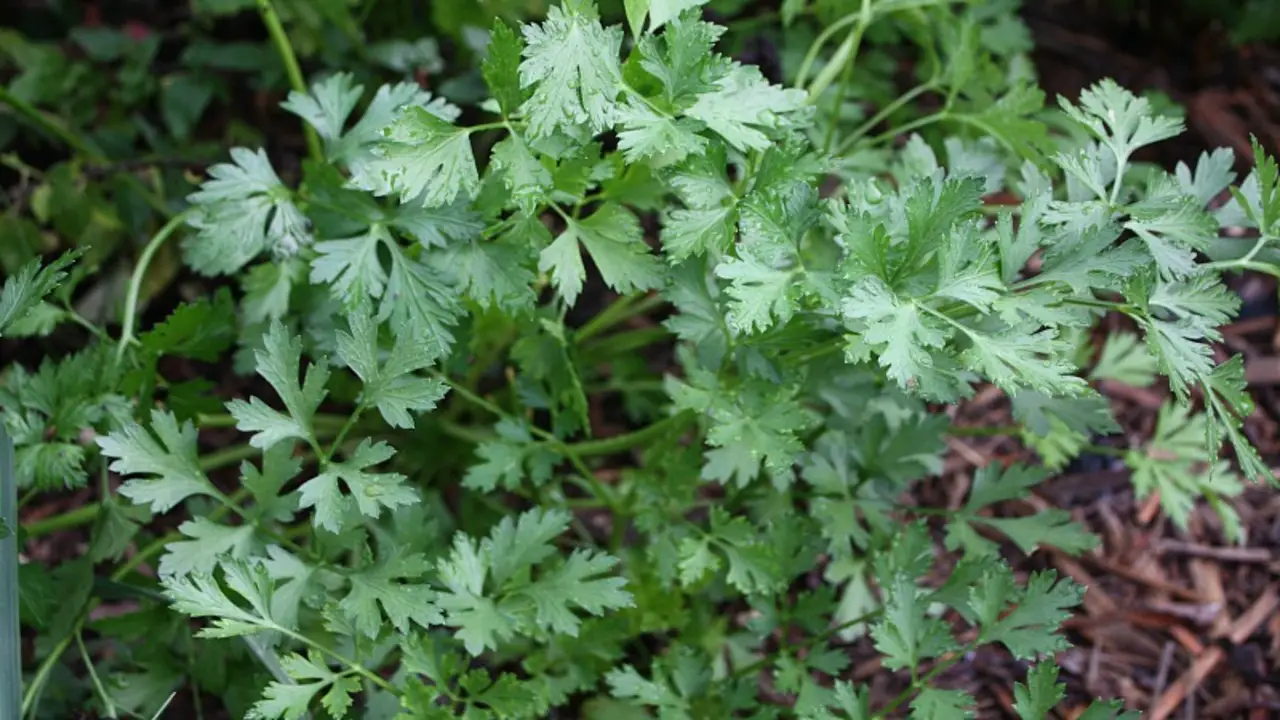
To grow Japanese parsley, start by planting the seeds indoors and transplanting the seedlings once they reach a few inches in height. Choose a sunny or partially shaded location with well-draining soil. It’s important to water Japanese parsley regularly, keeping the soil evenly moist but not soggy. People often grow the plant as a biennial or perennial because it can tolerate colder temperatures. To harvest, pick the outer leaves as needed, allowing the plant to grow.
Ways To Use Japanese Parsley
Japanese parsley, also known as Mitsuba, is a versatile herb that can be used in various ways in cooking. Its delicate flavor and crisp texture make it a popular ingredient in Japanese cuisine. Experiment with these ideas to discover new ways to incorporate the refreshing taste of Japanese parsley into your culinary creations. Here are some ways to use Japanese parsley:
- Garnish: Sprinkle chopped Japanese parsley on top of soups, salads, or sushi rolls for an added pop of freshness and color.
- Seasoning: Mix finely chopped Japanese parsley with soy sauce, sesame oil, and a dash of lemon juice to create a flavorful dressing for noodles or vegetables.
- Tempura: Dip sprigs of Japanese parsley in tempura batter and deep-fry until crispy for a unique twist on traditional tempura.
- Rice Seasoning: Finely chop Japanese parsley and mix it with cooked rice, sesame seeds, and soy sauce for a flavorful side dish.
- Soup Stock: Add whole sprigs of Japanese parsley to simmering broths or stocks to infuse them with their aromatic flavor.
Hamburg Root Parsley
Hamburg Root Parsley is a unique variety of parsley that is grown for its large, white, carrot-like root. Unlike other types of parsley, which are primarily cultivated for their leaves, Hamburg Root Parsley is prized for its flavorful and aromatic roots. The roots can be harvested and used in various culinary dishes, adding a distinctive taste and texture. They can be roasted, boiled, or added to soups and stews to enhance the flavor profile. Additionally, Hamburg Root Parsley leaves can be used as a garnish or in salads for a fresh and vibrant touch.
- Scientific Name: Petroselinum crispum (Mill.) Fuss
- Hardiness Zone: 5-10
- Light: Full sun
- Soil: Well-draining
- Water: Keep it moist
How To Identify Hamburg Root Parsley
Hamburg root parsley can be identified by its large, white, carrot-shaped roots and green foliage. It has a unique aroma similar to regular parsley, and its flat leaves resemble curly parsley. Unlike other types of parsley, Hamburg root parsley is primarily grown for its roots rather than its leaves.
It has an earthy and slightly sweet flavor that makes it a popular ingredient in soups, stews, and roasted vegetable dishes. The roots are often used like carrots or parsnips and can be boiled, steamed, roasted or mashed. In addition to being a flavorful addition to meals, hamburger root parsley also offers several health benefits. It is high in vitamin C, potassium, and fibre, aiding digestion and boosting the immune system.
How To Grow Hamburg Root Parsley
Growing Hamburg root parsley requires planting the seeds directly in well-draining soil that is loose and exposed to full sun or partial shade. It’s important to keep the soil moist by regularly watering the parsley. After 12-16 weeks, the roots can be harvested and stored in a cool, dark place or the refrigerator. Hamburg root parsley is an excellent source of vitamins and minerals, making it a nutritious addition to any diet.
Ways To Use Hamburg Root Parsley
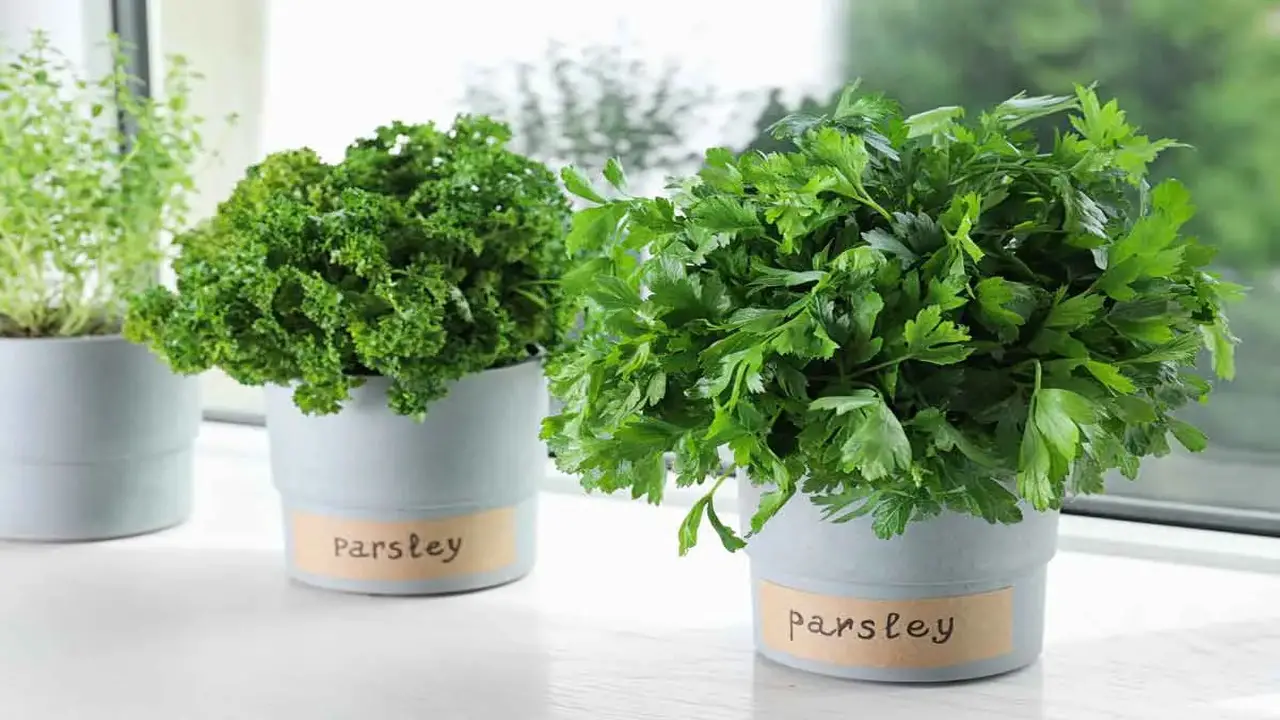
Hamburg root parsley, also known as turnip-rooted parsley, is a unique variety of parsley that is valued for its flavorful and versatile root. The root of the plant tastes similar to parsnips or carrots, with a slightly earthy and sweet flavor. There are several ways to use Hamburg root parsley in your culinary creations:
- Roasted Or Sautéed: The root can be roasted or sautéed to enhance its natural sweetness and flavor. Simply peel and chop the root into bite-sized pieces, toss them in olive oil, salt, and pepper, and roast them in the oven until they are tender and golden brown. Alternatively, sauté the chopped root in a pan with butter or oil until soft and lightly caramelized.
- Mashed: Like potatoes or other root vegetables, Hamburg root parsley can be mashed for a delicious side dish. Boil the peeled and chopped roots until tender, then mash them with butter, milk or cream, salt, and pepper. You can also add other herbs or spices to customize the flavor.
- Soups And Stews: The earthy flavor of Hamburg root parsley makes it an excellent addition to soups and stews. Add diced roots to your favorite soup or stew recipe for added depth of flavor. The roots will soften as they cook and infuse the broth with their unique taste.
- Salads: For a fresh twist on salads, you can grate or julienne Hamburg root parsley and add it to your favorite greens. It’s crunchy texture, and distinct flavor will add a new dimension to your salad.
Whether you’re looking to try something new in your cooking or want to explore different flavors, Hamburg root parsley
Conclusion
Parsley is a versatile herb that comes in different varieties, each with its own unique flavor and uses. Whether you prefer the robust taste of flat-leaf parsley, the decorative appeal of curly parsley, the vibrant flavors of Japanese parsley, or the earthy notes of Hamburg root parsley, there’s a parsley type for every palate and culinary need.
Learning about these different types of parsley adds variety to your cooking and allows you to explore new flavors and enhance your dishes. We’ve discussed All types of parsley. So, don’t be afraid to experiment and incorporate different types of parsley into your recipes.
Frequently Asked Questions
1.What Is The Best Tasting Parsley Variety?
Ans: The flavor of parsley can vary depending on the variety. Curly parsley is milder, while Italian parsley has a stronger, more robust taste preferred in Mediterranean dishes. Ultimately, the best tasting parsley variety is subjective and depends on personal preference and the prepared dish.
2.Which Parsley Has No Flavor?
Ans: Curly parsley is known for having the least flavor among all types of parsley. It may not have a strong taste, but it adds texture and visual appeal to dishes. Flat-leaf parsley has a stronger flavor and is commonly used in cooking. Consider the flavor profile you want when selecting parsley for your dish.
3.What Is The Most Common Variety Of Parsley?
Ans: The most commonly found variety of parsley is curly parsley. It is characterized by its tightly curled leaves and slightly bitter taste. Another popular variety is flat-leaf parsley, also known as Italian parsley, which has a milder flavor and is often used in Mediterranean cuisine. There are also other parsley types, such as Hamburg and root.
4.Why Learn About Different Types Of Parsley?
Ans: Learning about the various types of parsley can enhance your cooking skills. Each type has its distinct flavor and texture, which can greatly impact the taste of your dishes. By understanding these differences, you can choose the right parsley variety to elevate the flavors in your recipes.
5.When To Use Fresh Parsley Or Dried Parsley?
Ans: Fresh parsley or dried parsley? The choice depends on your dish. Use fresh parsley for garnishing and salads, while dried parsley is great for soups, stews, and sauces. Fresh parsley adds flavor and color at the end, while dried parsley infuses flavor throughout the cooking process.






